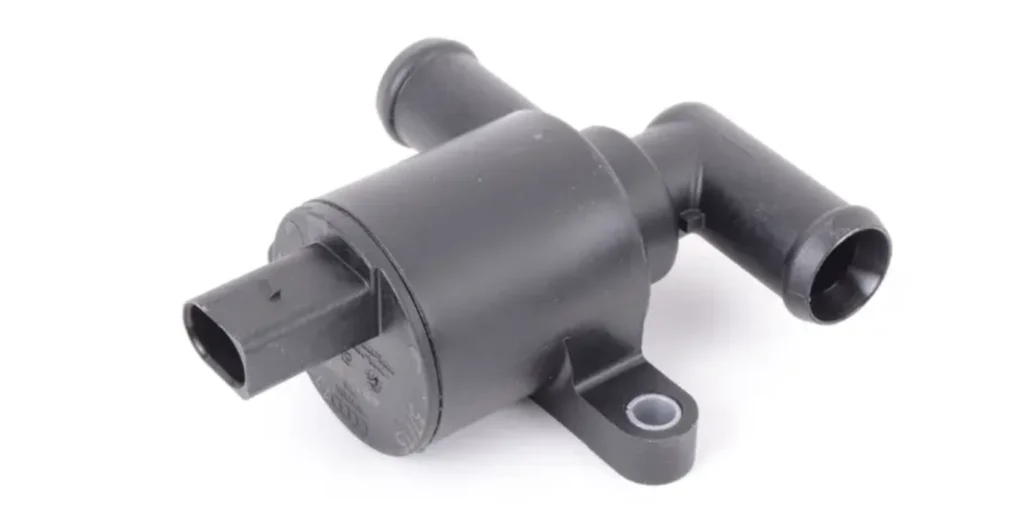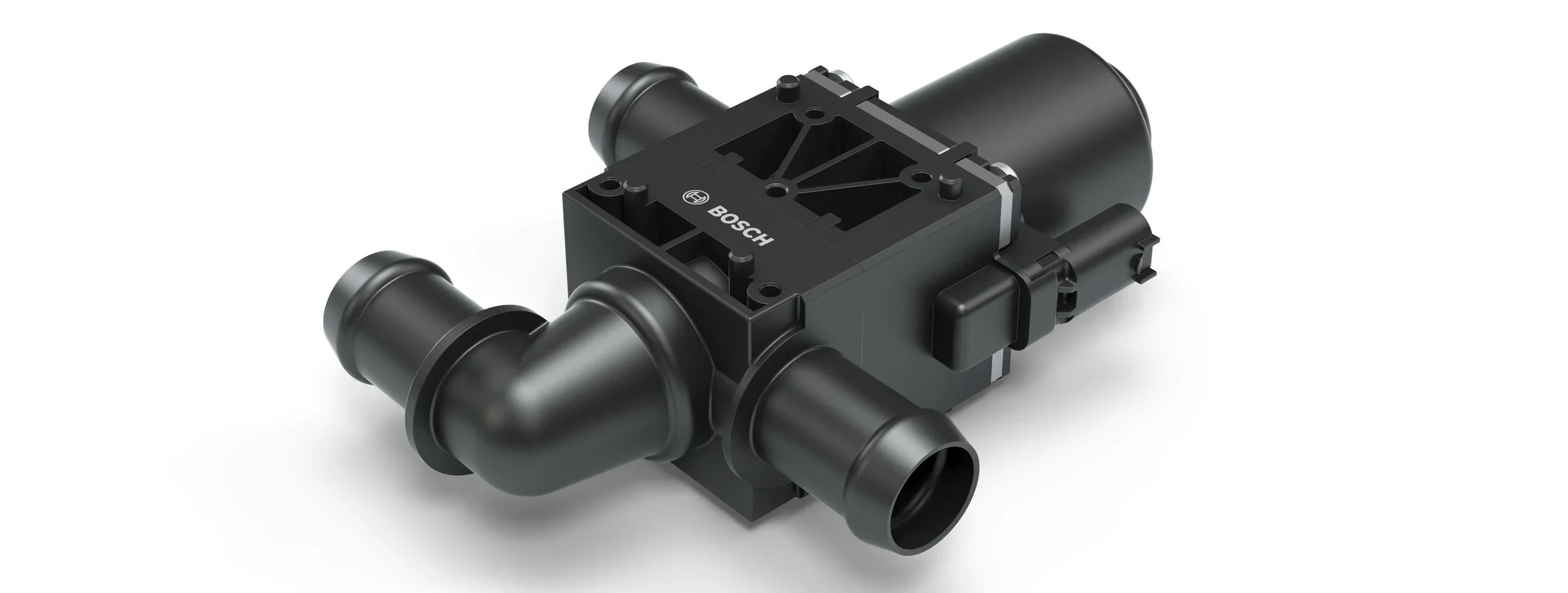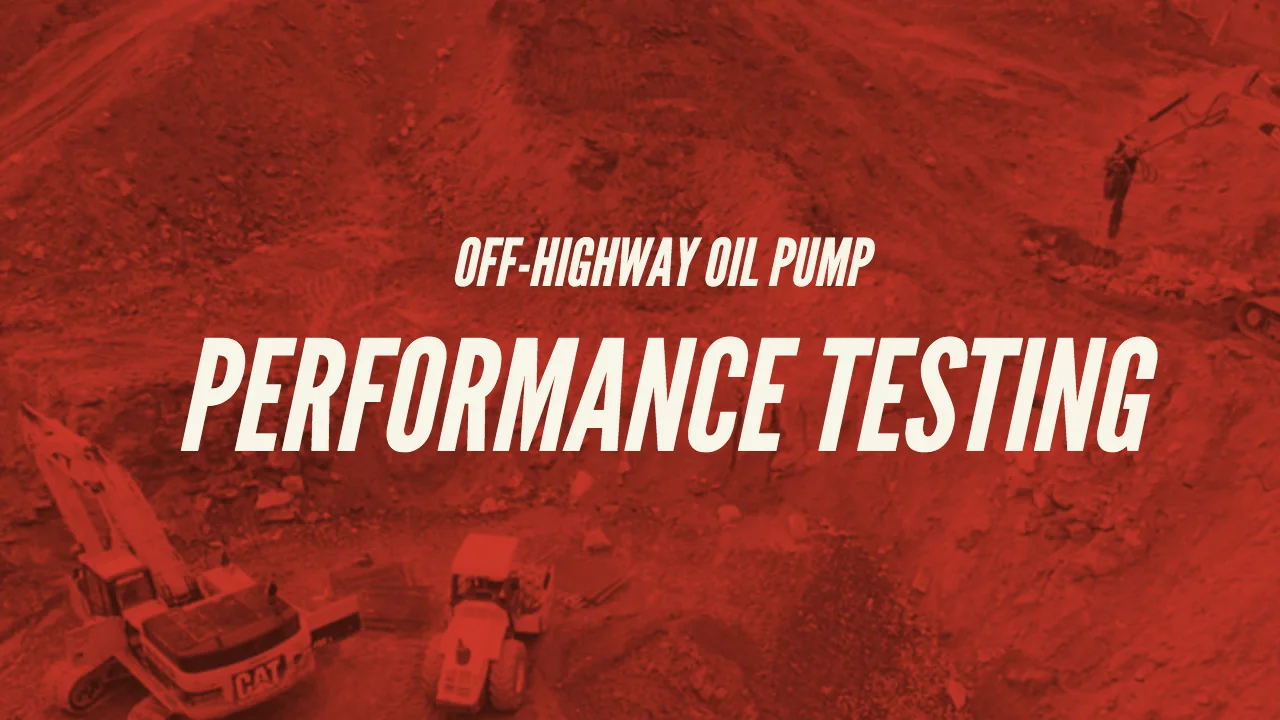Heat management has played an important factor on several fronts in the drive to improve efficiency of automotive powertrains. On conventional internal combustion engines, with the engine downsizing trends, increased use of exhaust turbocharging, integration of start-stop technology, etc, it has resulted in engines that have higher specific outputs with reduced capacity heat sinks. Hybrid vehicles introduce even more complexity, as there are usually three independent circuits operating at different conditions – combustion engine cooling, electric drive cooling, and battery cooling. Battery electric vehicles have adopted the use of electric cooling pumps for electric drive and battery cooling.

Audi Coolant On/Off Valve
FUNCTIONAL TRENDS
Various components in the cooling circuit now operate as both heat sinks and sources, producing an increased number of potential heating or cooling scenarios. For example, a portion of the main coolant pump flow in a combustion engine can be diverted to an engine/transmission oil heat exchanger to speed up the oil heating process after a cold start, while the pump flow rate is later adjusted to a different proportion to cool the oil at nominal operating conditions.
Additionally, the flow rate generated by the same pump needs to be proportioned accordingly to manage the cooling of heat source components such as the engine block, cylinder head, integrated exhaust manifold, turbocharger, etc. To accommodate all the possible combinations, the market has been increasingly leveraging the use of coolant switching valves.
VALVE TYPES
The key functional feature of coolant switching valves within thermal management modules is the ability to either allow or block flow, or to mix/divert the flow to a specific proportion. The valves come in a variety of different designs, such as:

Bosch Coolant Switching Valve
2/2 valves (discrete control) → this type of valve can be either normally open or normally closed, with the flow path between P1 and P2 being either open or closed
3/2 diversion valve (discrete control) → flow goes from P1 to P2 or from P1 to P3
3/2 distribution valve (PWM control) → flow is continuously switched between P1 to P2 and P1 to P3 to create a specific bias between P2 and P3
3/2 mixing valve (PWM control) → flow is continuously switched between P2 to P1 and P3 to P1 to create a desired proportion at P1
Rotary valves (proportional control) → flow is continuously adjusted between multiple inputs and outputs, depending on valve configuration, through proportional control. These valves can be operated in open-loop or closed-loop mode, usually through a LIN control signal.
Advanced valve (4-ways or more) → In hybrid and electric vehicles, they are used for simultaneously distributing coolant to the battery, power electronics, and more.
VALIDATION PROCEDURES
As with any other automotive powertrain component, the Design Verification (DV) and Production Validation (PV) program includes checking the performance and durability characteristics of these valves. The OEM test standards each have their specific acceptance criteria, sample size, statistical conformance, and reporting requirements defined at a test level. The detailed procedures may have certain aspects that are specific to the OEM, but at a high level there is a set of tests which are fundamental to being able to properly characterize the coolant valve characteristics.
Examples of performance tests:
Valve Pressure Drop → pressure drop is measured between two open ports as a function of inlet flow rate and coolant/air temperature
Valve Leakage → leakage flow rate is measured between two closed ports as a function of supply pressure and coolant/air temperature
Valve Response → valve opening and closing characteristics are characterized in the time domain by evaluating the differential pressure across two ports as a function of inlet flow rate and coolant/air temperature
Valve Operating Voltage and Current → valve opening and closing voltage and current draw is measured during a controlled voltage ramp
Examples of durability tests:
Vibration with Thermal Cycling → valve is cycled between two ambient temperature extremes while being exposed to sinusoidal and random vibration profiles, with the vibration profiles being performed in all 3 axes sequentially
Pressure Cycle Life Test → valve is cycled between two pressure setpoints at a particular frequency, with dwell times at both the high and low pressures, for a specified number of pressure cycles at an elevated coolant temperature
Thermal Shock Resistance Test → valve is quickly switched between environments at the minimum and maximum rated temperature, and left to dwell for a particular period of time at each extreme; this procedure is repeated for a specified number of cycles
TEMPERATURE CONDITIONING
These valves typically need to be verified at both the cold and hot extremes, as well as specific points between those extremes. This ultimately translates to coolant and environmental test temperatures ranging from -40°C to +130°C. There are many challenges associated with implementing the supporting equipment to allow for the test system to control temperature across such a wide range. Some of them include:
large difference in viscosity of the coolant between the hot and cold extremes
allowances for thermal expansion of the coolant within the circuit
provision of refrigeration systems as a cooling source
thermal gradient limitations with heat exchange hardware
effects of thermal offset on measurement instrumentation
FLOW and LEAK Measurement
 Flow rate measurement is another critical feature of the equipment needed to characterize these valves. In the open condition, the flow rate between two ports may be greater than 100LPM. On the other hand, for leakage measurement in the closed state, the flow rates are usually under 0.1LPM. The test system, therefore, has to accommodate process circuitry that is large enough not to induce excessive pressure drops at the higher flow rates, while also not being oversized in order to provide adequate response time for leak measurement.
Flow rate measurement is another critical feature of the equipment needed to characterize these valves. In the open condition, the flow rate between two ports may be greater than 100LPM. On the other hand, for leakage measurement in the closed state, the flow rates are usually under 0.1LPM. The test system, therefore, has to accommodate process circuitry that is large enough not to induce excessive pressure drops at the higher flow rates, while also not being oversized in order to provide adequate response time for leak measurement.
Other challenges include effective air bleeding of the pressurized test circuit. Depending on the coolant mixture, which can range anywhere from a 70:30 to 30:70 ratio of ethylene glycol and water, and the test temperature, the resultant viscosity of the mixture will vary. This variation, in combination with the physical layout of the circuit which can cause air entrapment in undesired points, can introduce variability in test results or even cause unstable operating conditions.
PWM vs LIN Electrical Control
The electrical modules required for running the coolant valves typically take on one of two forms, depending on whether the valve is controlled in PWM or LIN mode. In PWM mode, a system usually requires using an adjustable power supply and a solid-state relay. This allows for test conditions at minimum, nominal, and maximum voltage levels, as well as different frequency and duty cycle combinations.
For LIN-controlled valves, a LIN interface device is required to read/write commands from the LDF file, in addition to the adjustable power supply functionality. Lastly, current sensing instrumentation with adequate bandwidth and accuracy is required to measure the valve transient characteristics.
How we can help
The coolant valve has evolved from simple on/off to complex multi-port components, required to perform at extremes. Our platform-based systems are tailored to your application. Thanks to Section ID™, you can reduce systems integration risk with proven modules.
Outline design and test engineering to refine new products and come up with an approach to characterize prototypes
Test systems to benchmark performance, durability, and end-of-line production validation
Robust fluid conditioning subsystems, engineered for prolonged use between extremes.
Accurately measure key parameters for on/off and proportional multi-port control valves.
Within the physical interface, coolant flex hose, quick disconnects, isolation valves, and flow sights are available for part samples.
On the control side, simulate various test conditions (i.e. hot/cold fluid and air temperature) according to industry standards
We also utilize our systems, standards, and technologies to support clients with test services
Responsive support services that range from 24/7 engineering assistance to full system calibration (meets ISO 17025 standard).




